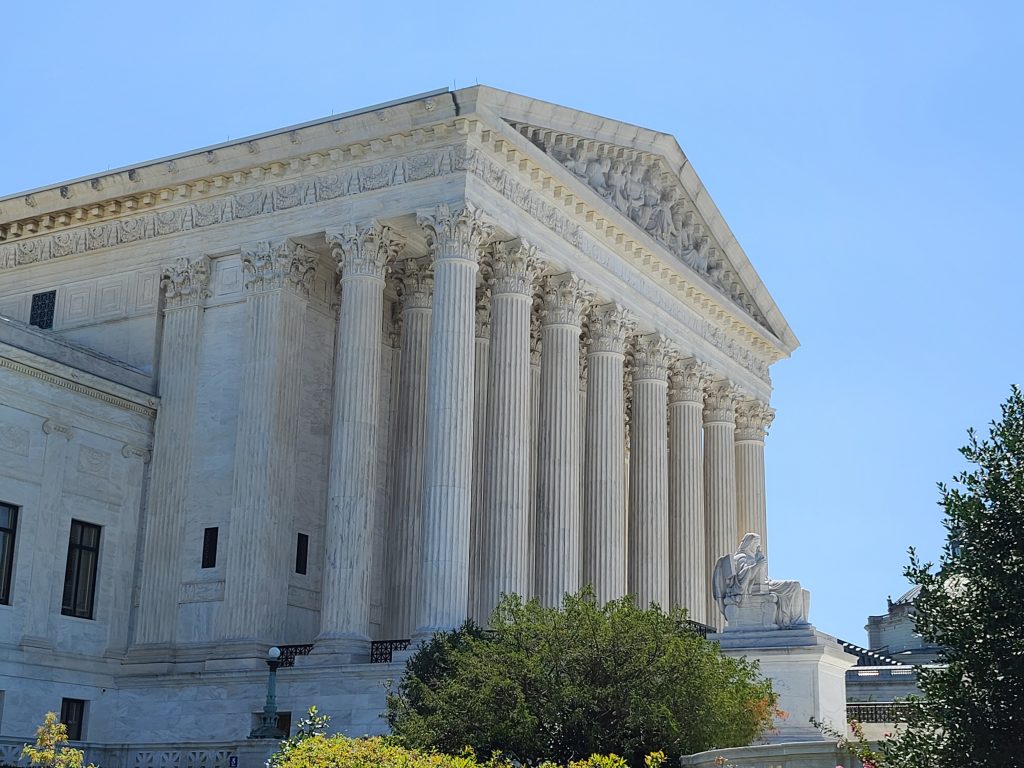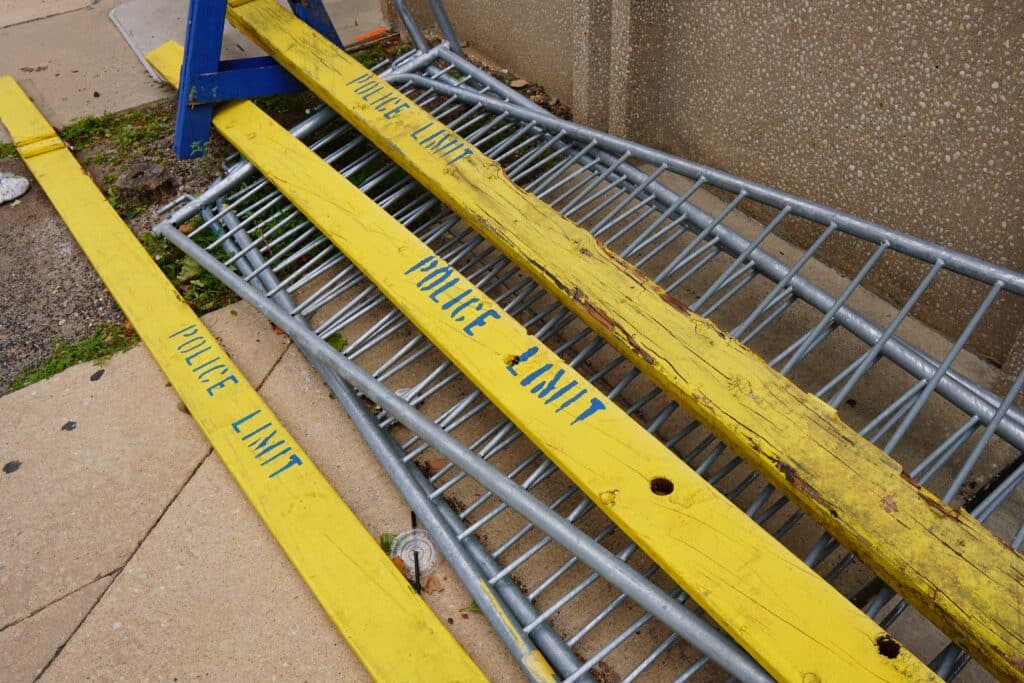Well, the courts decided to do a Friday gun news dump this week.
First, the Seventh Circuit Court of Appeals dropped its ruling on Illinois’s “assault weapons” and “high capacity” magazine ban. It used a novel reasoning to uphold the bans under the Bruen standard.
But we also got huge news from the Supreme Court. The Justices announced they’ve agreed to hear two new gun cases. The first is one challenging the bump stock ban. The other is a case involving the National Rifle Association.
However, despite both cases being related to guns, neither is likely to shed any light on the Second Amendment. As I explain below, the questions at issue in the case simply don’t touch on gun rights. But that doesn’t mean they won’t have a huge impact on gun owners.
Contributing Writer Jake Fogleman takes a look at why the Maine shooter should not have been able to legally obtain or retain the guns he used to kill 18 and wound 13 more. Plus, a mass shooting researcher joins the podcast to examine the failures that led to that attack.

Analysis: Supreme Court’s New Gun Cases Unlikely to Impact Second Amendment [Member Exclusive]
By Stephen Gutowski
The Supreme Court is taking up the bump stock ban and an NRA case, but don’t expect the outcomes to tell us much about the Second Amendment.
That’s because neither case actually involves Second Amendment questions. Garland v Cargill is primarily about the ATF’s administrative power. NRA v. Vullo is about whether a New York official violated the gun group’s speech rights.
Cargill deals with the bump stock ban first instituted by former President Donald Trump in 2018 and still defended by current President Joe Biden. A circuit split developed on the question of whether the ban is constitutional last year after the Fifth Circuit Court of Appeals bucked the other appellate courts to take up the case and struck down the ban. But they didn’t do it on Second Amendment grounds.
Instead, the majority focused on how bump stocks don’t fit the statutory definition of “machinegun,” and the ATF didn’t how the power to reclassify them as such.
“As an initial matter, it purports to allow ATF—rather than Congress—to set forth the scope of criminal prohibitions,” Judge Jennifer Walker Elrod wrote for the majority in Cargill. “Indeed, the Government would outlaw bump stocks by administrative fiat even though the very same agency routinely interpreted the ban on machineguns as not applying to the type of bump stocks at issue here. Nor can we say that the statutory definition unambiguously supports the Government’s interpretation.”
Vullo stems from a letter sent to financial institutions by former Superintendent of the New York State Department of Financial Services Maria Vullo. In it, she warned the companies they could face adverse consequences if they didn’t cut ties with the NRA.
“Subject to compliance with applicable laws, the Department encourages its chartered and licensed financial institutions to continue evaluating and managing their risks, including reputational risks, that may arise from their dealings with the NRA or similar gun promotion organizations, if any, as well as continued assessment of compliance with their own codes of social responsibility,” Vullo wrote in the letter. “The Department encourages regulated institutions to review any relationships they have with the NRA or similar gun promotion organizations, and to take prompt actions to managing these risks and promote public health and safety.”
She also praised companies that had cut ties with the NRA in the wake of the Parkland shooting.
“There is a fair amount of precedent in the business world where firms have implemented measures in areas such as the environment, healthcare, and civil rights in fulfilling their corporate social responsibility,” she said. “The recent actions of a number of financial institutions that severed their ties with the NRA and have taken other actions after the AR-15 style rifle killed 17 people in the school in Parkland, Florida, is an example of such a precedent.”
The gun-rights group filed suit against New York and Vullo claiming her pressure campaign violated its First Amendment rights.
Last year, a three-judge panel at the Second Circuit Court of Appeals ruled against the NRA. It argued that Vullo “acted reasonably and in good faith.”
“[W]e conclude that the NRA has failed to plausibly allege that Vullo ‘crossed the line ‘between attempts to convince and attempts to coerce,’” the court wrote. “Moreover, even assuming that Vullo’s actions and statements were somehow coercive, we conclude further that her conduct here–taking actions and making statements in her various capacities as regulator, enforcement official, policymaker, and representative of New York State–did not violate clearly established law.”
With the Supreme Court taking up the NRA’s appeal, we’ll soon find out if the Court thinks Vullo overstepped her power in trying to turn companies against the group based on its political beliefs. Just like we’ll soon find out if it thinks the ATF overstepped its power in reclassifying bump stocks as a means to ban them. But we won’t find out much of anything about what the Court thinks about the Second Amendment from these gun-related cases.
That doesn’t mean they won’t have a huge impact on gun owners, though.
In fact, it’s likely the bump stock case will matter more in the short term for the average gun owner than United States v. Rahimi, which is a Second Amendment case. That’s because the bump stock ban and its spiritual successors affect far more people than the domestic violence restraining orders at issue in Rahimi.
There may have only been a few hundred thousand bump stocks out there before the possession ban kicked in, but the same logic and tactics used to underride the bump stock ban have been applied to far more popular accessories too. The redefinition of “firearm” in an effort to regulate unfinished parts and homemade gun builds likely affects more. Same for the Biden Administration’s push to restrict how many used guns a person can sell without getting a license.
But the legality of Biden’s pistol-brace ban is also implicated by the outcome of the bump stock case. And that ban is easily the largest. Estimates vary widely, with the Congressional Research Service putting the number of braced guns at 40 million, but there are at least 3 million on the lowest end of the scale.
Of course, that’s not to say the Court’s decision in Rahimi won’t have major implications. It is guaranteed to provide us with at least some direct commentary on Second Amendment protections. It will provide the first insight into who can be restricted from owning firearms since the Court handed down its landmark decision in 2022’s New York State Rifle and Pistol Association v. Bruen.
Don’t expect the Court’s two new gun cases to do that. But do expect them to have a real-world impact on gun owners.
Podcast: Mass Shooting Researcher on What Went Wrong in Maine [Member Early Access]
By Stephen Gutowski
This week, we’re examining some of the failures that led to the worst mass shooting in Maine’s history.
Despite making multiple threats, hearing voices, and being committed to a mental institution; the shooter was about to obtain and keep his guns. Federal law bars anyone who was involuntarily committed from possessing firearms, and Maine has a version of the so-called red flag laws he should’ve qualified. So, why was he able to carry out the attack with guns he shouldn’t have legally had?
To help answer that question and give expert insight into how these laws work in practice, we have Bates College Professor Michael Rocque on the show this week. Rocque has spent years studying mass shootings. He’s also researched red flag laws and is very familiar with how Maine’s law works.
Rocque argued the problem seems to have been both a breakdown in communication, perhaps between the multiple different layers of authority, and follow-through by law enforcement. He said multiple people tried to do the right thing in expressing their serious concerns about the shooter’s mental health. However, unfortunately, not everyone did everything needed to ensure he wasn’t able to pull off his attack.
Plus, Contributing Writer Jake Fogleman and I discuss Ruger’s continued sales slide.
You can listen to the show on your favorite podcasting app or by clicking here. Video of the episode is available on our YouTube channel. Reload Members get access on Sunday, as always. The show goes public on Monday.

Analysis: The Maine Shooter Should Have Been Disarmed [Member Exclusive]
By Jake Fogleman
New updates in the aftermath of last week’s Lewiston mass shooting continue to suggest that law enforcement officials failed to disarm the gunman despite having ample opportunity and legal justification to do so.
In the days following the attack, which left 18 people dead and 13 others wounded, details surrounding the perpetrator’s mental health history remained hazy. An official law enforcement bulletin published during the manhunt for the shooter, and later reporting by the Associated Press, indicated that his time spent in a mental hospital was the result of an involuntary commitment. That would make it a federal crime for him to possess firearms. However, information shared by Maine officials just days later seemed to dispute that point.
“I have not seen to this point that [the shooter] was forcibly committed for treatment,” Mike Sauschuck, Maine Public Safety Commissioner, said in a press conference last weekend. “And if that didn’t happen, then the NICS check, you could go into a firearms dealer who does all of their work, and the background check is not going to ping that this person was prohibited.”
But on Wednesday, The Boston Globe reported that an official with the hospital where the shooter underwent mental health treatment confirmed that his stay was indeed the result of involuntary commitment.
“Another warning came in July when [the suspect] grew agitated, paranoid, and delusional while his unit was stationed at West Point Academy in Cortlandt to train young soldiers,” The Globe reported. “The situation deteriorated to the point where New York State Police were called in to escort [the suspect] to the hospital, where he was involuntarily committed. Physicians there determined he needed further treatment and sent him to another hospital, where he stayed for two weeks.”
The Globe also noted that the commitment prompted the Army to instruct the shooter’s commanders to no longer allow him to “have a weapon, handle ammunition, or participate in live-fire activity while on duty.”
The paper‘s reporting provides the most significant indication yet that the shooter should never have been allowed to buy or keep the guns he used to carry out his attack. It also raises questions as to why, for the purposes of the federal background check system, his time spent under involuntary commitment was not on the federal government’s radar.
If what the hospital official confirmed is true, then under the letter of the law the shooter was a prohibited person as early as July of this year—a full three months before he ever went on his deadly rampage. 18 U.S.C. § 922(g)(4) makes it a felony offense for any person who has been “adjudicated as a mental defective” or who has been “committed to a mental institution” to possess or receive a firearm. The Department of Justice considers someone to have been committed to a mental institution if that person “has been formally committed to a mental institution by a court, board, commission, or other lawful authority” on an involuntary basis.
The suspect also apparently believed he was involuntarily committed. Shortly after being released from the hospital, he attempted to buy a silencer from a Maine gun shop but failed because he indicated he had been institutionalized on his background check form.
“He came in and filled out the form, he checked off a box that incriminated himself saying that he was in an institution,” Rick LaChapelle, owner of Coastal Defense Firearms, told ABC News. “Our staff was fantastic, let him finish filling out the form, and said, ‘I’m sorry, Mr. Card, we cannot give you this… at this point in time, we cannot release this silencer to you because of the answers that you’ve given us.”
It’s not clear if the shop ran the background check after seeing the suspect admit to being committed. If it did, though, the sale may not have been blocked as it should have been because the FBI said the National Instant Criminal Background Check System didn’t have any records relating to the suspect’s time in the mental institution. The agency told the AP it “did not have nor did it receive any tips or information concerning” the suspect and it “was not provided with or in possession of any information that would have prohibited [the suspect] from a lawful firearm purchase.”
It’s possible that the Army, which was evidently so concerned with the shooter’s erratic behavior that it disarmed him while on duty, failed to report his commitment to the NICS database. That same issue was at play when the Air Force failed to share a slew of disqualifying convictions with the FBI, allowing the 2017 Sutherland Springs shooter to purchase a firearm when he would have otherwise been prohibited.
But, even if a communication breakdown between the military and federal law enforcement did occur, local officials closest to the shooter during his downward spiral also missed several opportunities to intervene. The Globe reported that multiple law enforcement officers—including the Sheriff of the county neighboring Lewiston—served in the Army reserves with the shooter and personally witnessed his threats to carry out a mass shooting that led to his involuntary commitment. Yet, no one thought to apply for a warrant to seize his already-purchased weapons based on that commitment or to try and invoke the state’s version of a “red flag” law.
Furthermore, multiple outlets have confirmed that the shooter’s erratic and threatening behavior continued after he was released from the mental facility. The Wall Street Journal reported that he again threatened to carry out a mass shooting at his Army installation and “get” the commanders who ordered his commitment in September. Those threats prompted members of his Army unit to request a wellness check from local police agencies who tried twice but never actually made contact with the shooter to confirm his mental state or evaluate his propensity for violence. The local Sheriff’s office was concerned enough to issue a missing person’s bulletin to law enforcement agencies across Maine notifying them that he was “armed and dangerous, suffering from psychotic episodes and hearing voices,” yet not so concerned as to use Maine’s temporary weapons confiscation law.
The same can be said for the New York State Police officers who were called to escort the shooter to his involuntary commitment by the Army back in July. Despite being under an executive order from New York Governor Kathy Hochul (D.) to issue a “red flag” order on anyone they have probable cause to suspect could be a threat, there’s no indication that one was filed in New York either.
There were a litany of warning signs and potential offramps on the Maine mass shooter’s road to eventual violence. While many people in his life raised alarms along the way, government officials appear to have failed to take full advantage of existing laws designed to cover individuals in this exact circumstance.
That’s it for now.
I’ll talk to you all again soon.
Thanks,
Stephen Gutowski
Founder
The Reload








Only Members can view comments. Become a member today to join the conversation.